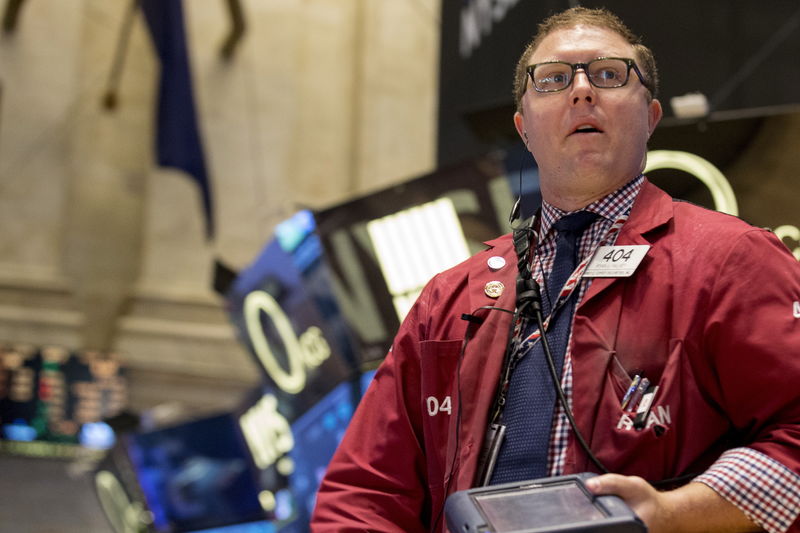
Uber Technologies Inc., UBER -10.75% Lyft Inc. LYFT -5.75% and other big startups going public now have touted their new business models that disrupt old industries but lose historic amounts of money.
To try to win over investors, they have also come up with unusual alternatives for measuring their performance. So far, investors aren’t buying it.
The ride-hailing rivals have struggled after debuting on the public markets with the two largest-ever 12-month losses for American startups preceding an IPO. Uber, with a $3.7 billion loss in the 12 months through March, priced its shares at the low end of expectations and its stock has fallen about 18% from Friday’s offering price. Lyft, with a loss of $911 million last year, has fallen about 33% since its debut in March.
Both companies provide financial measures they say better measure their performance. However, these measures ignore significant expenses. Uber calls this “core platform contribution profit,” and on this basis, it made $940 million last year versus a $3 billion operating loss. Lyft’s “contribution” profit, measured differently, was $921 million.
Some companies turn around after poor public debuts. And Uber and Lyft aren’t alone in creating unconventional metrics that mask large losses.
WeWork Cos., the shared office space company, filed for an IPO in December—its executives say it should be treated like a tech firm—after inventing a new profit metric called “community-adjusted Ebitda.”
The measurement flipped WeWork’s bottom line last year from a net loss of about $1.9 billion, using standard accounting, to a profit of $467 million, using the company’s preferred measure. The loss, based on generally accepted accounting principles, would be the second largest in history among U.S. startups going public—between Uber and Lyft—according to S&P Global Market Intelligence.
“The early investors are trying to find some sucker who will buy the stock in the public market,” said Howard Schilit, a forensic accountant known for detecting accounting tricks. “In order to sell the deals, they make up a fact pattern that is nonsensical.”
Spokesmen for WeWork and Uber declined to comment. A Lyft spokesman said the contribution figure is meant to help investors understand how its margins are expanding.
The creative accounting is reminiscent of the late 1990s dot-com bubble, when money-losing companies went public touting “pro forma” profit as a better measure of financial performance. More recently, Silicon Valley startups have pushed unconventional financial terms like “annual recurring revenue,” “billings” and “bookings” that can inflate their actual performance.
Many companies argue these nontraditional metrics are better measures for understanding the growth trajectory of their businesses. Venture capitalists often place a premium on startups that can grow quickly, ignoring some upfront expenses. Marketing costs, for example, might push companies into the red at first, but if customers who sign up are highly profitable in the long run, the losses would be worth the investment today, venture capitalists and entrepreneurs say.
New Math
A look at creative ways tech companies have measured their financial performance ahead of IPOs

Groupon
Uber
WeWork
Operating loss (2010)
Operating loss (2018)
Net loss (2018)
–$3.0 billion
–$1.9 billion
–$420 million
New metric:
Adjusted consolidated
segment operating income
New metric:
Core platform
contribution profit
New metric:
Community-adjusted
Ebitda
$940 million
$60.6 million
$467 million
Excludes:
Marketing expenses related to subscriber acquisition
Excludes:
‘‘Unallocated’’ costs such as research for self-driving cars
Excludes:
Basic expenses like marketing related to growth
Company’s reason:
Marketing costs are an upfront investment for growth
Company’s reason:
Shows profitability for active WeWork buildings
Company’s reason:
Better measures costs tied to the ride-hailing and delivery businesses

Groupon
Uber
WeWork
Operating loss (2010)
Operating loss (2018)
Net loss (2018)
–$420 million
–$1.9 billion
–$3.0 billion
New metric:
Adjusted consolidated
segment operating income
New metric:
Core platform
contribution profit
New metric:
Community-adjusted
Ebitda
$940 million
$60.6 million
$467 million
Excludes:
Marketing expenses related to subscriber acquisition
Excludes:
Basic expenses like marketing related to growth
Excludes:
‘‘Unallocated’’ costs such as research for self-driving cars
Company’s reason:
Marketing costs are an upfront investment for growth
Company’s reason:
Better measures costs tied to the ride-hailing and delivery businesses
Company’s reason:
Shows profitability for active WeWork buildings

Groupon
WeWork
Uber
Operating loss (2010)
Net loss (2018)
Operating loss (2018)
–$1.9 billion
–$3.0 billion
–$420 million
New metric:
Adjusted consolidated
segment operating income
New metric:
Community-adjusted
Ebitda
New metric:
Core platform
contribution profit
$940 million
$60.6 million
$467 million
Excludes:
Marketing expenses related to subscriber acquisition
Excludes:
‘‘Unallocated’’ costs such as research for self-driving cars
Excludes:
Basic expenses like marketing related to growth
Company’s reason:
Marketing costs are an upfront investment for growth
Company’s reason:
Better measures costs tied to the ride-hailing and delivery businesses
Company’s reason:
Shows profitability for active WeWork buildings

Uber
Operating loss (2018)
–$3.0 billion
New metric:
Core platform contribution profit
$940 million
Excludes:
‘‘Unallocated’’ costs such as research for self-driving cars
Company’s reason:
Better measures costs tied to the ride-hailing and delivery businesses
WeWork
Net loss (2018)
–$1.9 billion
New metric:
Community-adjusted Ebitda
$467 million
Excludes:
Basic expenses like marketing related to growth
Company’s reason:
Shows profitability for active WeWork buildings
Groupon
Operating loss (2010)
–$420 million
New metric:
Adjusted consolidated segment
operating income
$60.6 million
Excludes:
Marketing expenses related to subscriber acquisition
Company’s reason:
Marketing costs are an upfront investment for growth
Source: the companies
Once startups go public, they must explain non-GAAP financial terms and disclose how they differ from traditional accounting, as required by law. Accounting watchdogs warn investors not to ignore standard measures, which exist to make financial statements easily comparable across companies.
Companies are reporting rosier numbers than their financials would indicate if they were using standard accounting practices. The members of the S&P 500 index reported earnings in 2018 that were $19 a share higher using adjusted profit measures, according to Howard Silverblatt, a senior index analyst at S&P Dow Jones Indices.
That figure is double the average increase of the past 10 years. Since 1980, only recessionary periods have seen similar increases in the difference between companies’ preferred profit measures and the standard figures as such periods are often accompanied by large write-offs.
The growing gap is something investors need to keep their eyes on, Mr. Silverblatt said. “These are real expenses and could be indications that companies are running into difficulty.”
In 2000, in the wake of the dot-com bust, Lynn Turner, chief accountant at the Securities and Exchange Commission, lamented what he called “EBS” earnings reports, or “Everything but Bad Stuff.”
Still, tech companies have tried to push the envelope with regard to problematic financial performance. And many firms have failed to convince investors.
In 2011, Groupon Inc. touted in the first three pages of its IPO filing a metric it created called “adjusted consolidated segment operating income,” or ACSOI. The measurement didn’t include subscriber-acquisition expenses like marketing costs, causing its $420 million operating loss in 2010 to flip to a $60.6 million profit. It ended up taking out ACSOI from its IPO filing due to pressure from the SEC and its shares dropped sharply after its public offering.
In 2015, Yahoo Inc.’s then-CEO Marissa Mayertried to sell investors a new revenue measure she called “Mavens”—an acronym for mobile, video, native advertising and social—that tracked smaller parts of the business that were growing even as the lion’s share continued to fall. The metric was widely panned and two years later, Yahoo sold its core business to Verizon Communications Inc. at a steep discount from where the company had once been valued.
WeWork’s community-adjusted Ebitda excludes hundreds of millions of dollars in operating expenses and recognizes up front the discounts it gets for signing long-term leases, instead of amortizing them over the life of the lease. WeWork says the measure better isolates the costs associated with active buildings.
Uber’s “contribution profit” ignores hundreds of millions of dollars in research and development expenses—including those aimed at self-driving technology—even though it has said such efforts are important to its future. Lyft says “contribution” is a key measure “of our ability to achieve profitability,” but the figure ignored nearly $2 billion in 2018 operating expenses that pushed it deeply into the red.
Any tech investors concerned about how companies report their numbers are losing power to do much about it. Lyft and WeWork are among technology companies giving supervoting shares to founders, a move that has grown more common among startups.
According to data form Jay Ritter, a professor at the University of Florida who studies IPOs, a third of tech companies that went public from 2015 through 2018 had supervoting shares, up from an average of 6% in the previous years dating back to 1980. A 10th of non-tech IPOs had supervoting shares the past 38 years.
Share Your Thoughts
What do you think is the best way to measure Uber and Lyft’s financial performance? Net loss or profit? “Contribution” profit? Something else? Join the conversation below.
Write to Rolfe Winkler at rolfe.winkler@wsj.com
https://www.wsj.com/articles/uber-and-lyft-get-creative-with-numbers-but-investors-arent-blind-to-the-losses-11557826202
2019-05-14 09:30:00Z
CAIiEAQtvkNO7MQ_pUhHWFPCj3kqGAgEKg8IACoHCAow1tzJATDnyxUwmK20AQ



